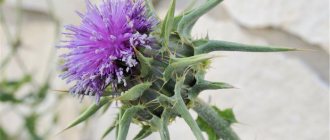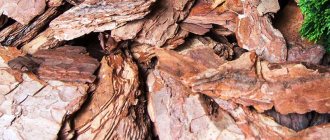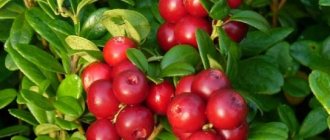Quote from palomnica59
Read in full In your quotation book or community!
Using moss.
Moss is an amazing plant that is classified as evergreen. Islands of its bright greenery can be observed from early spring until frost. That is why moss has become an equivalent alternative to lawn grass in landscape design. And, thanks to the many varieties and wide range of colors, moss lawns turn out to be original, noticeable and, of course, memorable.
Many people think that moss requires special conditions (moisture, swampy places, shade) and is difficult to grow. But it is not so. Most species actually feel better near ponds and streams, under the shade of trees. But there are also mosses that grow well in sunny meadows, open areas and even on roofs.
Where can you use moss?
- garden sculptures and other decorative elements covered with moss will add a pleasant velvety feel and create the feeling of an ancient garden
- place moss in the spaces between paving garden paths. This technique will hide uneven seams and soften the overall appearance.
- covering the roof of a cellar or shed. If there is a bulk cellar on the site, the “green” roof will additionally cool the space inside
- lawns and lawns
- when decorating a garden in Japanese or retro style
- when designing the shoreline of a reservoir, stream, swamp
- garden graffiti
- garden compositions
- hanging planters
- phytowalls
- moss flower bed
- design of the root zone of container plants
Mossy stones, tree trunks, driftwood and ceramic amphorae have a natural look and create a peaceful atmosphere of an ancient garden. For your experiments with moss, choose boulders with a porous surface (limestone, tuff). Moss spores will easily attach to them, and the plant will develop well. If the surfaces that you plan to cover with moss are smooth, treat them with an abrasive to create the necessary unevenness and only then apply the prepared mixture with spores:
Recipe: 2 cups of kefir, natural yogurt, milk or buttermilk (optional) + moss (fresh or dry) mix 1.5 cups in a blender until smooth. In terms of thickness, aim for the consistency of sour cream or light cream. If you need to thicken more, add crushed moss, if diluted, add water. For smooth surfaces, moistened ceramic clay is added to the mixture. It will increase the viscosity of the composition and allow the mixture to consolidate.
After 6 weeks, you will be able to evaluate whether the moss has taken root where you placed it.
Mosses do an excellent job as a background that emphasizes the beauty of the forms and the brightness of the colors of other plants. Feel free to add mosses to the design of a rock garden, alpine slide or Czech rolling pin. They will give a finished, natural look to your landscape objects. Moss can be used to cover an entire retaining wall in a garden, or it can be used to fill gaps between stones to add color to the masonry and soften corners.
The following plants will look good against the backdrop of a mossy meadow:
- violet
- cowberry
- fern
- conifers
- hydrangea
- rhododendron
Application of sphagnum
For many years, the beneficial properties of sphagnum moss have made life easier for people and saved lives. Sphagnum perennial moss began to be actively used during military operations, since there was a shortage of dressing materials. Residents of North America to this day use the dry plant instead of lining in children's cradles, because... Thanks to its qualities, it helps to avoid diaper rash.
For medicinal purposes
Sphagnum is used in medicine and is known for its bactericidal and aseptic properties; it is used for disinfection and other purposes:
- It resists infection of wounds and cuts.
- Due to the content of phenolic substances, coumarin, sugar and resin compounds, sphagnum moss is an antiseptic.
- Using the plant for a fracture as a dressing or bandage, you do not have to resort to additional sterilization.
- Moss fights bacteria, fungus of the skin and nails, is useful for psoriasis and skin irritations, and fights suppuration of wounds.
- Perennial sphagnum can be used as a raw material for the production of medicinal and other types of alcohol, and feed yeast. In addition, moss is useful for burns and frostbite. To do this, grind dry moss and pour boiling water until it becomes a paste, then apply the slightly cooled moss to the sore spot.
- To combat bedsores in bedridden patients, sphagnum bedding is used: they absorb sweat and eliminate unpleasant odors.
- This type of perennial plant is also used as additional splints for bone fractures.
- Chewing sphagnum moss is known to dull labor pains and speed up the birth process.
- For excessive sweating of the feet, insoles made of sphag are used; to do this, it must be crushed and filled with a linen bag that follows the contour of the foot.
- A decoction of sphagnum moss has long been used in Chinese medicine for sore throats, flu, and as a disinfectant for stomatitis and infections in the nasopharynx. The decoction is used to actively treat insect bites and ulcers.
- Based on the extract of a perennial plant, medicines have been created to treat the prostate and inflammation in the bladder.
- Sphag can be used as cotton wool or a bandage; it absorbs much more moisture than cotton wool.
- For colitis, crushed sphagnum moss is used: a teaspoon is eaten half an hour before meals.
- Considering its dermatological properties, the perennial is used for skin diseases - a special compress is made.
- To combat staphylococcus, sphagnum perennials are collected from swampy areas, the peat water is squeezed out, then the infected areas are washed with it or wet sphagnum is applied to the infected area.
Several recipes that help with various diseases:
- Powder that promotes the healing of open wounds and ulcers. Dried pieces of sphagnum must be thoroughly ground, then sprinkled on the cut and wait a few minutes. After this, you need to wash the wound and apply a bandage.
- Infusion against nail fungus Pour one hundred grams of dry plant with a glass of medical alcohol, leave for four minutes, then drain the alcohol, apply the moss to the infected nail and leave for several hours.
- A decoction for the treatment of joint diseases. One hundred grams of sphagnum must be poured with ten liters of water, brought to a boil and allowed to brew for several minutes. After the broth has cooled completely, fill the bath with warm water and add it there. You should take a medicinal bath for half an hour to forty minutes.
Use on the farm
Our nature is rich in resources that play a big role in everyday life, and their beneficial properties are often not known to everyone. For economic purposes, the use of sphagnum has become widespread. Hundreds of gardeners and builders, flower growers and herbalists use moss as an assistant in everyday life.
Sphagnum perennial often plays the role of an ornamental plant; it is used in the design of flower beds or gardens. This perennial is often used by flower growers: lovers of orchids and indoor plants use it to insulate the root system. For the garden, peat moss acts as a fertilizer; it is suitable for aeration and improving soil quality, for storing root vegetables and onions, and germinating seeds.
Before adding sphagnum to the soil, it must be finely chopped. Due to its water-storing effect, sphagnum moss is used for indoor plants in rooms with low humidity as an additional source of moisture and nutrients if it is not possible to care for the flowers daily.
- Gifts for a 2 year old child - boy and girl
- Ultrasonic humidifier - review of models. How to choose the best ultrasonic humidifier for your home
- Pork in a slow cooker: cooking recipes with photos
Beekeepers use sphagnum as insulation for hives, to collect excess moisture during winter cold spells, and livestock breeders use it as bedding for livestock or pets, because it has the property of absorbing unpleasant odors, and the material used is used as a fertilizer for weakened soil.
The plant is suitable for sealing cracks or insulating walls in log houses or bathhouses: for this, wet moss is placed between the beams. Thanks to its antiseptic properties, sphagnum prevents the appearance of pests that can damage the wood layer, mold, and also provides ventilation. In addition, the plant has a natural smell, unlike other thermal insulation materials, and is not inferior to them in quality.
The plant is widely used as a decorative material; it can be used to create florariums, decorative floral compositions and panels. It will not only revive the appearance, but also prolong the life of neighboring plants. It can be used as an organic substrate, instead of a floral sponge.
Lawns and lawns
Moss lawns and lawns are often found in Japanese style gardens. Covering large spaces, moss smoothes out the unevenness of the landscape, uniting different objects into a single picture. And if you select several types of moss in different shades, you will get an interesting, voluminous space.
In addition to their beautiful appearance, such lawns have several advantages:
- they require almost no maintenance
- They don’t grow in height, which means they don’t need a haircut.
- Mossy lawns are practically not trampled
- even in winter, a moss lawn looks fresh and attractive
- moss coating protects plant roots from overheating and moisture loss
An excellent option for those who have little free time, but want to have a well-groomed, tidy area.
Mulching
Moss is great for mulching, but only for those crops that love acidified soils.
These are cucumbers, potatoes, peppers, garlic, blueberries and others. For the best effect, it is recommended to use sphagnum moss, which grows in abundance in any pine forest. By the way, acidifying the soil will help get rid of excess grass. In addition, moss prevents the appearance of gray rot, a fungal disease of most garden crops.
Mulching with its use looks neat and well-groomed. Sphagnum moss is best suited for improving the quality of heavy clay soil.
Adviсe:
- moss for planting on the site can be bought at a flower shop or collected in the forest (preferably in a coniferous forest)
- When collecting moss, consider where you plan to plant it. To plant a lawn, we collect moss growing on the ground. For covering trunks, walls, sculptures - the one that grows on trees
- For good plant development and rich color of the coating, moss needs moisture and lighting in the morning and evening hours. In the midday heat, the moss should be under the cover of the openwork crown of trees
- the soil for mossy plantings should be acidic
- The most favorable time for planting is autumn
- It is necessary to remove fallen leaves and weeds from a mossy lawn
What are the benefits of sphagnum moss, the use of medicinal properties
Today, sphagnum has found its wide application in both folk and traditional medicine. Sphagnum has unique healing properties.
A thorough study of the plant confirmed that sphagnum moss has excellent bactericidal properties,
due to the presence of coumarins, sphagnol and organic acids in its composition. In addition, it was found that it has a pronounced antifungal effect. Thanks to this, sphagnum moss has found its use in the treatment of purulent wounds, as well as other traumatic skin injuries. It is used as a support for immobilizing fractures under extreme conditions.
How to harvest moss
When you go into the forest, collect enough moss. It is advisable to do this near streams or on heavily moist soil, in the shade of trees - these are the most comfortable conditions, which means the sphagnum will be of the highest quality.
There are two ways to collect. Firstly, just pick it and put it in a suitable bag or bag along with the “roots”. In this case, the collection process goes faster, and peat fertilizer, if you are interested in it, will form faster. But the volume of healthy, living moss will be reduced. Secondly, you can use ordinary scissors, cutting off the top layer of moss - only the green one, leaving the white one on the ground. Then even a small bag will fit a large amount of plant that will grow well.











